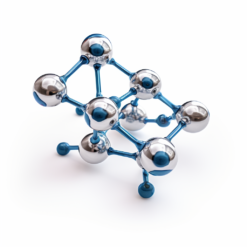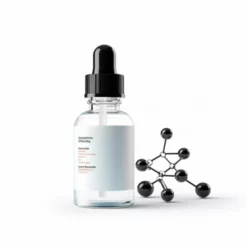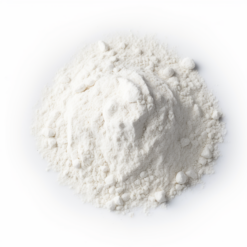Mechanism of action
Increase in superoxide dismutase (SOD) activity
Acetyl Tetrapeptide-5 supports SOD activity, which contributes to the protection of skin cells from oxidative stress. As a result, the peptide helps inhibit the glycation process that leads to the formation of protein cross-links, which in turn improves skin elasticity and prevents premature aging.
Improved microcirculation
By stimulating microcirculation in the eye area, Acetyl Tetrapeptide-5 reduces blood vessel permeability and moisture loss. This action contributes to the reduction of puffiness and dark circles under the eyes, providing a more rested and youthful appearance.
Anti-glycation effect
Glycation is a process in which sugars react with proteins to form advanced glycation end products (AGEs), which damage collagen and elastin, leading to loss of firmness and wrinkles. Acetyl Tetrapeptide-5 effectively inhibits this process, promoting skin structure and elasticity.
Cosmetic benefits
Thanks to its anti-edematous properties, Acetyl Tetrapeptide-5 is particularly effective in reducing bags under the eyes, which are often the result of poor lymphatic circulation and fluid accumulation. This peptide improves lymphatic circulation, which reduces puffiness and provides a more rested appearance. In addition, it has a calming and moisturizing effect on the skin, improving its smoothness and elasticity. The peptide also exhibits anti-inflammatory properties, which helps reduce skin irritation and redness. It is an excellent ingredient in products for sensitive and allergy-prone skin.
Research
The effectiveness of Acetyl Tetrapeptide-5 has been confirmed in numerous in vivo studies. In one study, 20 volunteers used a cream containing Acetyl Tetrapeptide-5 for 60 days. The results showed that in 70% of participants, the visibility of bags under the eyes decreased by the 15th day of use, and in 95% of participants by the end of the study.
Security
The product is considered a safe cosmetic ingredient. It does not show irritant or toxic effects at the concentrations used. Its lack of classification as a hazardous substance under chemical regulations confirms its safety for both users and the environment.








